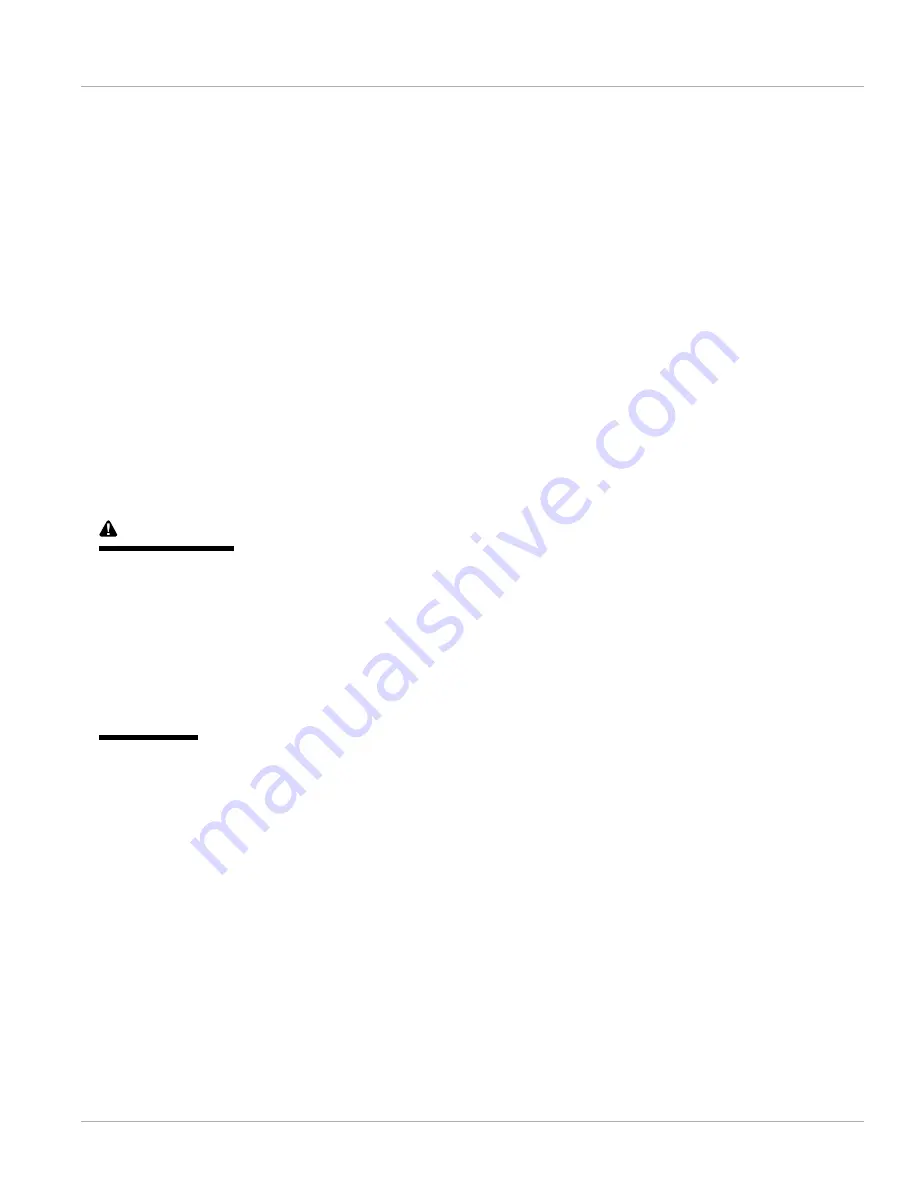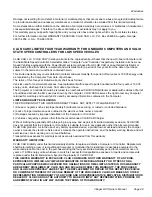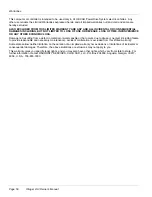
Batteries
connections should be clean and tight, and any worn insulation or frayed wires should be replaced. Tighten
battery terminals to proper torque.
See Connecting the Batteries – Electric Vehicles on page 13.
4.
After use, the batteries should be placed on charge. The batteries should never be left discharged any longer
than absolutely necessary (do not leave batteries discharged overnight).
BATTERY CARE – VEHICLES EQUIPPED WITH THE SINGLE-POINT WATERING SYSTEM
To keep batteries in good working condition, follow this maintenance program on a regular basis:
1.
Keep the batteries clean and free of corrosion. Wash tops and terminals of batteries with a solution of baking
soda and water (1 cup (237 mL) baking soda per gallon (3.8 L) of water). Rinse solution off of the batteries. Do
not allow this solution to enter the battery. Be sure terminals are tight. Let the terminals dry and then coat with
Battery Terminal Protector Spray (CC P/N 1014305).
See following NOTE.
NOTE:
Dispose of waste water properly.
2.
The battery hold-downs should be tight enough so that the batteries do not move while the vehicle is in motion,
but not so tight as to crack or buckle the battery case. Tighten hold-down retaining nuts to 55 in-lb (6.2 N·m).
The terminal connections should be clean and tight, and any worn insulation or frayed wires should be replaced.
Tighten battery terminals to proper torque.
See Connecting the Batteries – Electric Vehicles on page 13.
See following WARNING.
WARNING
• If battery wire terminals are damaged or corroded, replace or clean them as necessary. Failure to
do so may cause them to overheat during operation and could result in fire, property damage, or
personal injury.
3.
After use, charge the batteries. The batteries should never be left discharged any longer than absolutely
necessary (do not leave discharged overnight).
4.
Water the batteries monthly or according to the watering interval.
See Establishing the Watering Interval for
New Vehicles on page 37. See Watering Batteries with the SPWS on page 40.
CAUTION
• The watering interval must adequately maintain the electrolyte level above the top of the plates. See
Figure 14.
• Water the batteries only AFTER charging.
Establishing the Watering Interval for New Vehicles
If you do not already have a battery watering interval for your vehicles, manually check the battery water level weekly
to establish the correct watering interval. Thereafter, water batteries according to the established interval. During
periods of heavy use, add additional watering as required.
Single-Point Watering System Maintenance
1.
For vehicles newly equipped with the Single-Point Watering System, the initial electrolyte level check on all
battery cells verifies that all the valves in the SPWS are functioning correctly.
See Periodic Service Schedule
on page 31.
If a valve fails to open, the cell will eventually dry out. The initial one-time inspection of all cells
will identify any occurrence of a valve that fails to open. If a valve fails to close, it will become evident due to
the cell overflowing during routine watering. Either failure scenario is rare, but should be monitored in the initial
inspection and during routine watering sessions. Replace malfunctioning valves to ensure maximum battery
life.
See following CAUTION.
Villager LSV Owner’s Manual
Page 37
















































